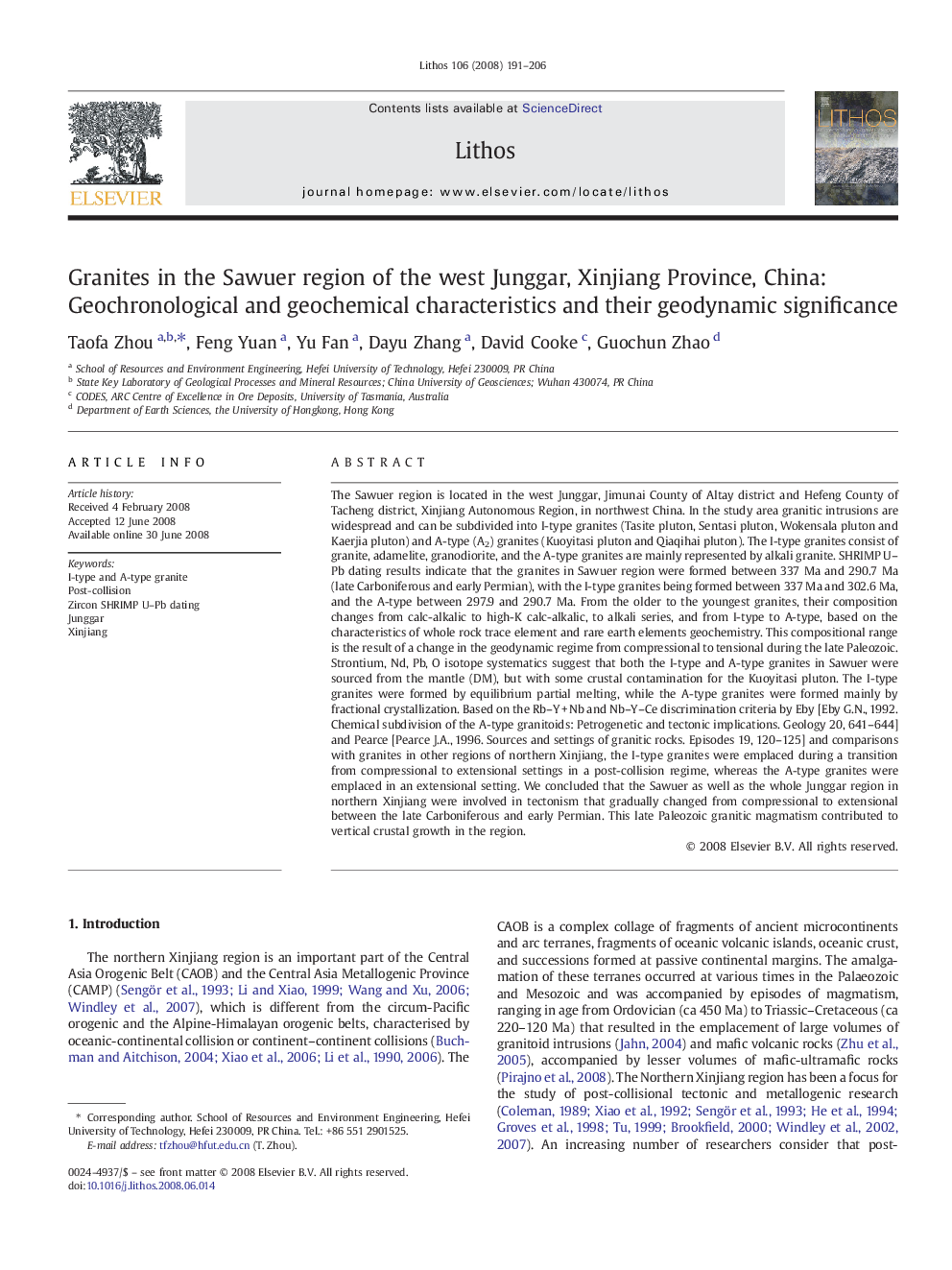| کد مقاله | کد نشریه | سال انتشار | مقاله انگلیسی | نسخه تمام متن |
|---|---|---|---|---|
| 4717422 | 1638750 | 2008 | 16 صفحه PDF | دانلود رایگان |

The Sawuer region is located in the west Junggar, Jimunai County of Altay district and Hefeng County of Tacheng district, Xinjiang Autonomous Region, in northwest China. In the study area granitic intrusions are widespread and can be subdivided into I-type granites (Tasite pluton, Sentasi pluton, Wokensala pluton and Kaerjia pluton) and A-type (A2) granites (Kuoyitasi pluton and Qiaqihai pluton). The I-type granites consist of granite, adamelite, granodiorite, and the A-type granites are mainly represented by alkali granite. SHRIMP U–Pb dating results indicate that the granites in Sawuer region were formed between 337 Ma and 290.7 Ma (late Carboniferous and early Permian), with the I-type granites being formed between 337 Ma and 302.6 Ma, and the A-type between 297.9 and 290.7 Ma. From the older to the youngest granites, their composition changes from calc-alkalic to high-K calc-alkalic, to alkali series, and from I-type to A-type, based on the characteristics of whole rock trace element and rare earth elements geochemistry. This compositional range is the result of a change in the geodynamic regime from compressional to tensional during the late Paleozoic. Strontium, Nd, Pb, O isotope systematics suggest that both the I-type and A-type granites in Sawuer were sourced from the mantle (DM), but with some crustal contamination for the Kuoyitasi pluton. The I-type granites were formed by equilibrium partial melting, while the A-type granites were formed mainly by fractional crystallization. Based on the Rb–Y + Nb and Nb–Y–Ce discrimination criteria by Eby [Eby G.N., 1992. Chemical subdivision of the A-type granitoids: Petrogenetic and tectonic implications. Geology 20, 641–644] and Pearce [Pearce J.A., 1996. Sources and settings of granitic rocks. Episodes 19, 120–125] and comparisons with granites in other regions of northern Xinjiang, the I-type granites were emplaced during a transition from compressional to extensional settings in a post-collision regime, whereas the A-type granites were emplaced in an extensional setting. We concluded that the Sawuer as well as the whole Junggar region in northern Xinjiang were involved in tectonism that gradually changed from compressional to extensional between the late Carboniferous and early Permian. This late Paleozoic granitic magmatism contributed to vertical crustal growth in the region.
Journal: Lithos - Volume 106, Issues 3–4, December 2008, Pages 191–206